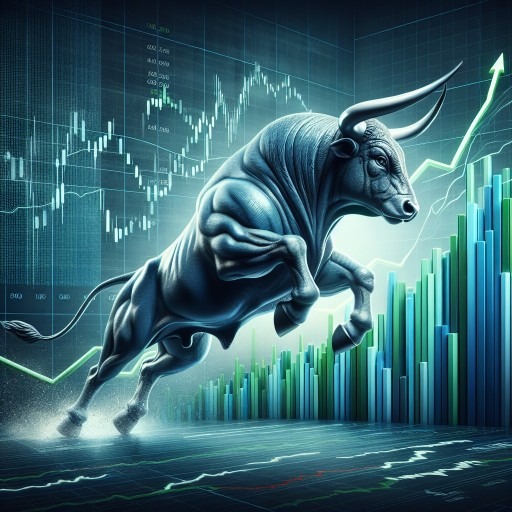Which economic indicators are used to measure the global economy? Let’s find out.
“The global economy whispers secrets—only those attuned to its indicators can decode its language and seize the opportunities.”
Jan 14, 2025
The question at hand is: “Which economic indicators are used to measure the global economy?” Let’s dive in and provide a compelling, thought-provoking answer.
The economy isn’t merely a collection of numbers—it’s a living, breathing force, the heartbeat of global progress. Economic indicators serve as its vital signs, offering insights into the health, momentum, and direction of markets worldwide. But these metrics do more than just reflect our current position—they whisper hints about the future, revealing patterns, trends, and opportunities. To truly decode their significance, you must go beyond the data, delving into the psychology and sentiment that drive them. Understanding this dynamic interplay is the key to mastering the global economic narrative.
The Compass of GDP: The Ultimate Metric of Growth
Gross Domestic Product (GDP) is the economic lighthouse—a beacon illuminating the state of a nation’s financial vitality. It’s the sum of all goods and services produced, representing the economy’s heartbeat. A rising GDP signals expansion, wealth creation, and opportunities. A decline? That’s the spectre of stagnation or recession looming large.
Consider China’s meteoric rise. In just a few decades, its GDP growth rewrote the rules of global economics, shifting the centre of gravity from the West to the East. Investors keenly track GDP trends not for raw numbers but for the stories they tell: the rise of emerging markets, the struggles of stagnant economies, and the domino effects they create.
Astute investors treat GDP data like a chessboard. For example, when India’s GDP began accelerating in the 2010s, global investors recalibrated, pouring capital into its IT and manufacturing sectors. This foresight, rooted in GDP interpretation, is what separates the bold from the clueless. GDP isn’t just a statistic; it’s a call to action for those ready to capitalize on its implications.
Trade and Balance of Payments: The Economy’s Global Report Card
A nation’s trade balance is more than just exports minus imports—it’s a litmus test for competitiveness. A trade surplus? That’s an economic pat on the back, signalling robust demand for a country’s goods. A deficit? It’s a red flag, highlighting vulnerabilities and reliance on foreign economies.
For example, Germany’s consistent trade surpluses reflect its engineering prowess and global demand for high-quality automobiles and machinery. Meanwhile, the U.S., with its persistent trade deficits, exposes an economy reliant on foreign goods and consumer spending. But here’s the twist: deficits aren’t inherently bad. For a nation like the U.S., they can signify strong consumer demand—a double-edged sword.
The balance of payments—encompassing trade, investments, and financial flows—provides a panoramic view of economic transactions. Investors savvy enough to predict shifts in these metrics can anticipate currency movements. A country with a current account surplus often sees currency appreciation, creating lucrative forex opportunities. Take Japan, whose surplus-driven yen has historically been a safe haven in times of global turmoil. The lesson? Master the art of interpreting trade data, and you hold the keys to predicting global economic tides.
Inflation: The Silent Erosion or the Catalyst for Growth?
Inflation is the economy’s thermostat—too high, and it burns; too low, and it freezes. It measures the rate at which prices rise and purchasing power diminishes. While moderate inflation can fuel growth, runaway inflation can spark chaos. Just ask Argentina, where triple-digit inflation has crippled its currency and shattered investor confidence.
Conversely, deflation—the opposite of inflation—is no picnic either. Japan’s “lost decades” of deflation stifled growth and created a vicious cycle of stagnation. Investors scrutinize inflation metrics like hawks, knowing they influence central bank policies. A spike in inflation often triggers interest rate hikes, making bonds more attractive but dampening stock markets.
Psychology plays a significant role here. Inflation data doesn’t just reflect economic conditions; it shapes them. When consumers expect rising prices, they spend more, fueling growth. But when fear of uncontrollable inflation spreads, markets spiral into panic. Smart investors, armed with inflation insights, position themselves for these reactions, whether it’s moving into commodities during high inflation or pivoting to equities in deflationary periods.
Employment Metrics: The Human Face of the Economy
Unemployment rates aren’t just numbers—they’re stories of livelihoods, aspirations, and struggles. High employment signals a thriving economy, boosting consumer spending and confidence. Rising unemployment, on the other hand, is a siren of distress, heralding reduced demand and slower growth.
The U.S. job market, often a bellwether for global trends, demonstrates this vividly. During the COVID-19 pandemic, unemployment skyrocketed, causing a ripple effect in global markets. Yet, post-pandemic recovery brought unprecedented job creation, sparking optimism and fueling market rallies.
For investors, employment data is a treasure trove. Positive job reports often lift markets, as they indicate economic stability. Meanwhile, weak employment figures can trigger sell-offs. But the bold investor doesn’t just react; they anticipate. For instance, knowing that technology sectors thrive on high-skilled employment, they might double down on tech stocks in regions with robust job growth in that industry.
Market Psychology: The Hidden Force Behind Indicators
Economic indicators are more than metrics; they are psychological triggers. Markets don’t just move on data; they move on interpretations of data. A slightly higher inflation figure or a minor GDP revision can send markets into frenzies or freefalls. Why? Because the numbers shape expectations, and expectations drive decisions.
Take the Federal Reserve’s interest rate decisions. Even a hint of hawkishness—indicating potential rate hikes—can cause bond yields to spike and stocks to tumble. Investors who grasp this interplay between indicators and psychology hold a decisive edge. They’re not just reacting to the news; they’re positioning themselves ahead of it, turning market sentiment into a weapon.
Employment Data: The Workforce as an Economic Engine
Employment data, particularly unemployment and job growth figures, are critical economic vitality and consumer confidence indicators. Low unemployment rates often signal a robust economy, as more individuals are gainfully employed, leading to higher disposable income and increased consumer spending. Job growth reflects the health of individual sectors and the overall economic momentum. When businesses are hiring, it suggests they are anticipating higher demand for their products or services, which can be a precursor to economic expansion.
Analyzing global employment trends is crucial for gauging the strength or weakness of the economy. For instance, consistent job creation in diverse sectors can indicate broad-based economic health, while rising unemployment may point to structural issues or cyclical downturns. Employment trends can also vary significantly between regions and industries, providing a more nuanced picture of the global economy. For example, technological advancements may lead to job growth in the tech sector while displacing workers in more traditional industries.
Adopting a contrarian strategy, savvy investors and policymakers can use employment data to anticipate and respond to central bank policies and market shifts. If employment figures are more potent than expected, central banks may consider tightening monetary policy to prevent the economy from overheating, which could lead to higher interest rates. On the other hand, if job numbers are weak, central banks might lower interest rates or implement other stimulative measures to encourage economic growth. Investors who can read between the lines of employment reports may find opportunities to adjust their portfolios ahead of these policy shifts, potentially gaining an edge over less discerning market participants. This contrarian approach, which often involves going against the prevailing market sentiment based on deep analysis, can be efficient during economic uncertainty or transition.
Conclusion:- Which economic indicators are used to measure the global economy?
A holistic view is paramount when interpreting economic data in the complex world of global economics. Just as a physician would not diagnose a patient based on a single symptom, investors and policymakers must consider a range of economic indicators to gain a comprehensive understanding of the financial landscape. This involves looking beyond the headline numbers of GDP, inflation, trade balances, and employment data to understand the underlying trends and what they signify about the health and direction of the economy.
Combining these economic indicators with an understanding of mass psychology and technical analysis can lead to a more nuanced market approach. Mass psychology can help gauge market sentiment and potential reactions to economic news, while technical analysis can provide insights into market trends and momentum. By integrating these disciplines, one can better anticipate market movements and identify potential risks and opportunities.
Adopting a Grandmaster chess mindset is crucial when navigating global economic indicators. This involves strategic thinking, foresight, and the ability to anticipate the moves of other market participants. Like a chess player who plans several moves, a wise investor or policymaker must consider the immediate implications of economic data and the second and third-order effects that may unfold. This strategic understanding allows for identifying patterns, predicting policy shifts, and crafting a well-informed game plan to navigate the ever-changing economic landscape confidently and precisely.
FAQ on Which economic indicators are used to measure the global economy?
Q: Which economic indicators are used to measure the global economy?
A: Key indicators to assess economic health include unemployment rates, job growth, GDP, inflation rates, and trade balances.
Q: How do unemployment rates reflect economic vitality?
A: Low unemployment typically indicates a strong economy with high consumer confidence and spending, driving further economic growth.
Q: Why is job growth significant?
A: Job growth signals sector health and economic momentum, suggesting that businesses anticipate increased demand for products and services.
Q: Can employment data predict central bank policies?
A: Strong employment data can lead to tightened monetary policy, whereas weak job numbers might prompt central banks to take stimulative measures.
Q: How should investors use economic indicators?
A: Investors should adopt a holistic approach, combining economic indicators with market sentiment and technical analysis to make strategic decisions.
Stimulating Treats for the Mind













